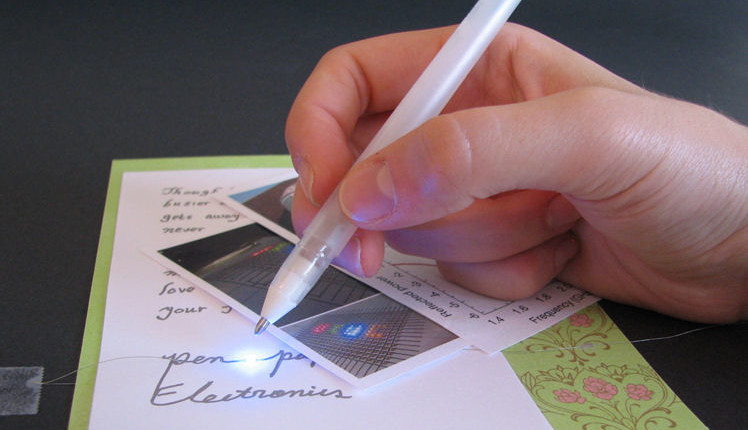Silver-inked pen writes circuits on non-conductive surfaces
on

While it looks like a typical silver-colored rollerball pen, this pen’s ink is a solution of real silver. After writing, the liquid in the ink dries to leave conductive silver pathways – in essence, paper-mounted wires. The ink maintains its conductivity through multiple bends and folds of the paper, enabling devices with great flexibility and conformability.
Metallic inks have been used in approaches using inkjet printers to fabricate electronic devices, but the pen offers freedom and flexibility to apply ink directly to paper or other rough surfaces instantly, at low cost and without programming.
The ability to create freestyle conductive pathways enables new possibilities in art, disposable electronics and folded three-dimensional devices. For example, the researchers used the silver pen to sketch a copy of the painting “Sae-Han-Do” by Jung Hee Kim, which portrays a house, trees and Chinese text. The ink serves as wiring for an LED mounted on the roof of the house, powered by a five-volt battery connected to the edge of the painting. The researchers also have demonstrated a flexible LED display on paper, conductive text and three-dimensional radio-frequency antennas.
Next, the researchers plan to expand the palette of inks to enable pen-on-paper writing of other electronic and ionically conductive materials.
Source: Liz Ahlberg for Illinoius News Bureau
Photograph: Bok Yeop Ahn


Discussion (0 comments)